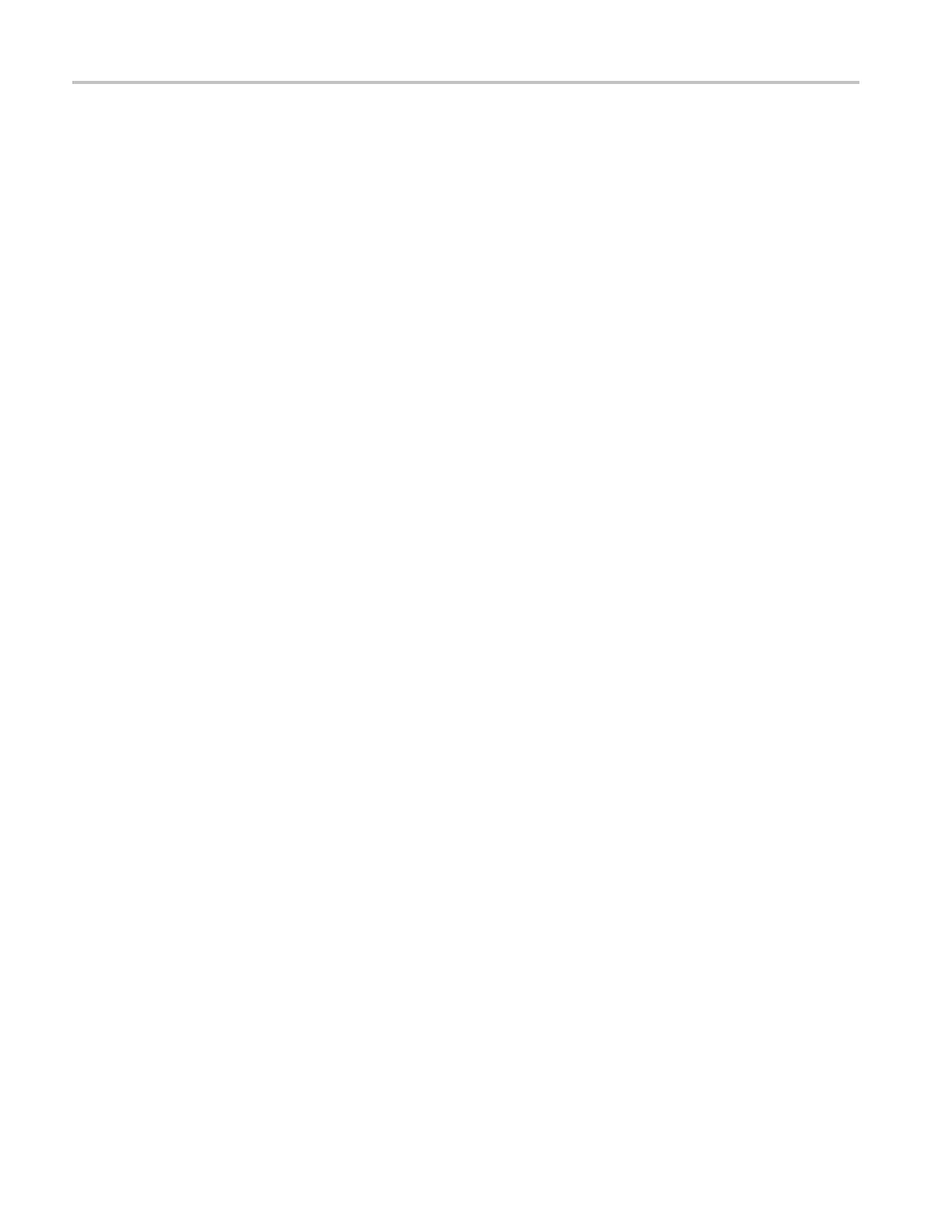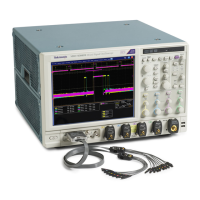Commands Listed in Alphabetical Order
<NR1> =0turnso
ff the pass/fail stop on failure, and any other integer turns on
the pass/fail SRQ on failure.
Examples
MASK:TEST:STOP:FAILURE OFF turns off the pass/fail stop on failure.
MASK:TEST:STOP:FAILURE? might return :MASK:TEST: STATE 0, indicating
that the mask pass/fail testing is turned off.
MASK:TESt:THReshold
This command sets or ret urns the number of failed tested waveforms needed
in each pass/fail test to cause the pass/fail status to change from ’Passing’ to
’Failing’.
Group
Mask
Syntax
MASK:TESt:THReshold <NR1>
MASK:TESt:THReshold?
Arguments
<NR1> is an integer that represents the number of tested waveform violations
occurring in each pass/fail test needed to change the pass/fail status to ’Failing’.
This means that if the threshold is set to the default of 1 then 1 failure would cause
a test failure. If the threshold is set to 2 then 2 failures would cause a test failure.
Examples
MASK:TEST:THRESHOLD 20 sets the number of failed tested waveforms to 20
that is needed in each pass/fail test to cause the pass/fail status to change from
’Passing’ to ’Failing’.
MASK:TEST:THRESHOLD? might return :MASK:TEST:THRESHOLD 32,
indicating that the 3 2 failures would cause a test failure.
MASK:TESt:WAVEform
This command sets or returns the numbe r of waveforms to test during pass/fail
testing. If Averaging is on, this is the number of averaged waveforms to test
during p ass/fail testing. It specifies the number of waveforms to be acquired in
counting the mask hits in the p ass/fail test. The default is 20.
Group
Mask
2-334 DPO7000, DPO70000/B and DSA7000/B Series Programmer Manual

